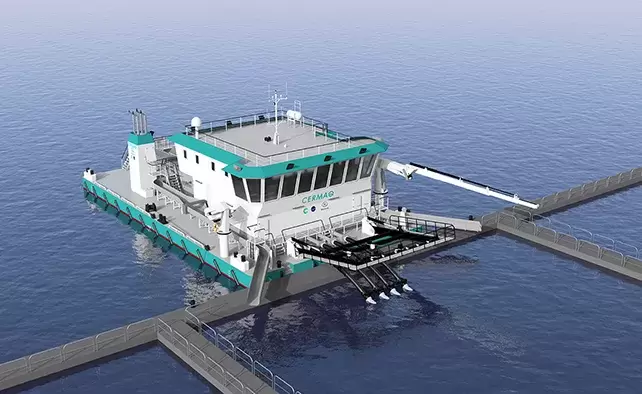Cermaq has ceased selling salmon from some of its farms in Clayoquot Sound after half of the company’s aquaculture sites in the region have indicated elevated levels of sea lice.
The decision to temporarily stop selling fish from four affected sites was announced by Cermaq on May 4 following discussion with the Aquaculture Stewardship Council, an international body that certifies fish farms based on standards of environmental responsibility. Sea lice data published by Cermaq show increases in seven of the 14 sites the company operates in Clayoquot Sound. Since early 2018 sea lice found at these farms have surpassed the level requiring treatment by as much as tenfold.
“Cermaq takes this matter very seriously and is actively addressing it,” said David Kiemele, Cermaq Canada’s managing director, in a statement issued May 4. “We have removed significant numbers of fish from several farms and continue to remove additional fish and treat remaining farms as quickly as possible.”
Fisheries and Oceans Canada sets the sea lice threshold at aquaculture sites, which is a standard of three lice per fish at the Cermaq sites. Since early 2018 the DFO has discussed the sea lice increase with Cermaq. The aquaculture has monitored sea lice in Clayoquot Sound since 2004.
“We are using multiple tools in the immediate term, including depopulating affected farms while treating others with an environmentally-safe hydrogen peroxide bath now that we have received a licence for that approach,” stated Kiemele. “More than a year ago we started a process of adding more tools to our toolkit, including a $12 million sea lice control barge that is being custom built and will be in place early next year.”
Termed the “hydrolicer,” the barge under construction is designed to use water pressure to remove lice from salmon in the net pens. Cermaq expects that the barge will be able to treat a whole fish farm site over two to three days.
Sea lice are small, parasitic crustaceans that feed on the skin and mucous of fish. They do not normally kill adult salmon, but can be fatal to juveniles. Although sea lice have been found in wild fish, the higher densities in aquaculture sites can allow the parasites to breed more easily.
For this reason the ASC includes sea lice levels among its standards for certifying fish farms. But the international body has recently faced criticism from a collective of environmental advocacy groups for being ineffective in its enforcement.
The David Suzuki Foundation stated that five of the Cermaq farms with elevated levels of sea lice are certified by the ASC. The ASC allows for variances in detected levels of lice at fish farms, which causes a shortcoming in the certification, according to the foundation.
“Cleary, the high lice loads at Cermaq’s ASC-certified farms demonstrate that the intent of the sea lice indicator — which is to protect migrating juvenile salmonids from farm-generated increases in lice — is being undermined by variances,” said David Suzuki Foundation senior science and policy adviser John Werring.
The ASC responded to this criticism by announcing plans to review its means of controlling sea lice limits.
“Terms of reference for this review will be made available for public consultation once necessary governance due diligence has been undertaken,” said the ASC in a prepared statement.
In the meantime, Cermaq has pledged to reduce its sea lice numbers down the levels reported through 2017, which were – for the most part – under the DFO’s threshold for treatment.
“This year has been challenging, and we are committed to getting back in line with our historical performance as quickly as possible,” said Kiemele.







